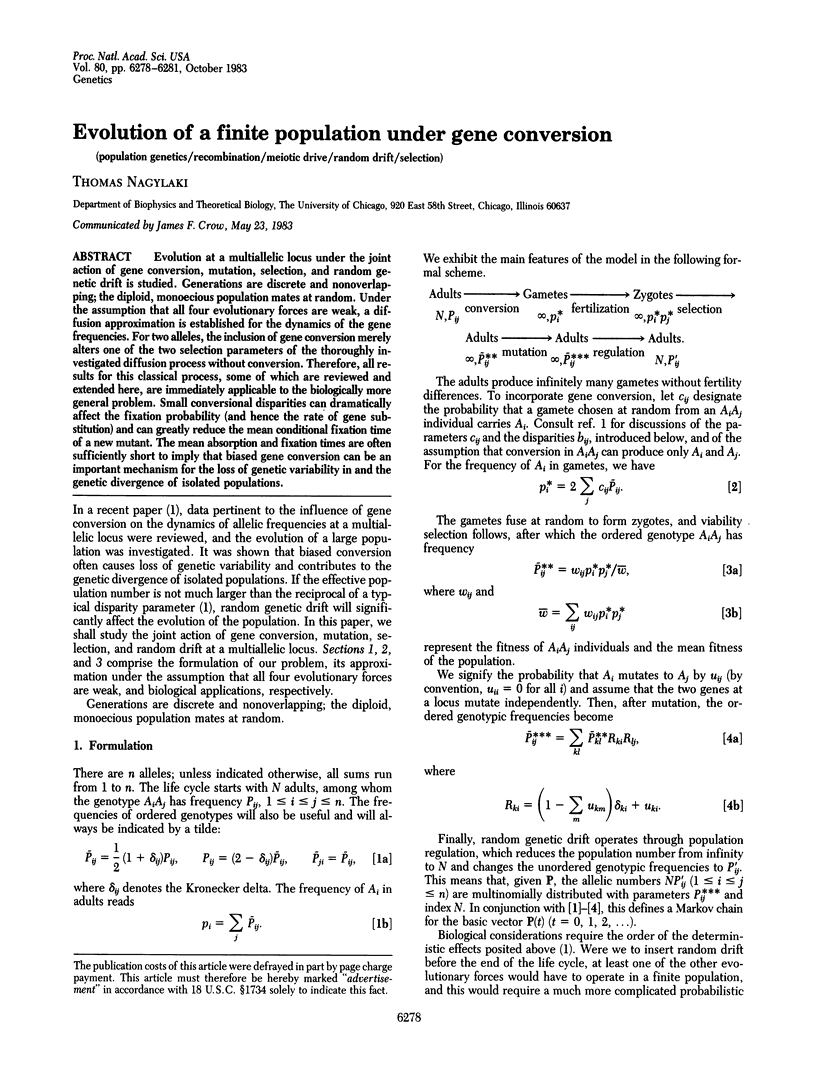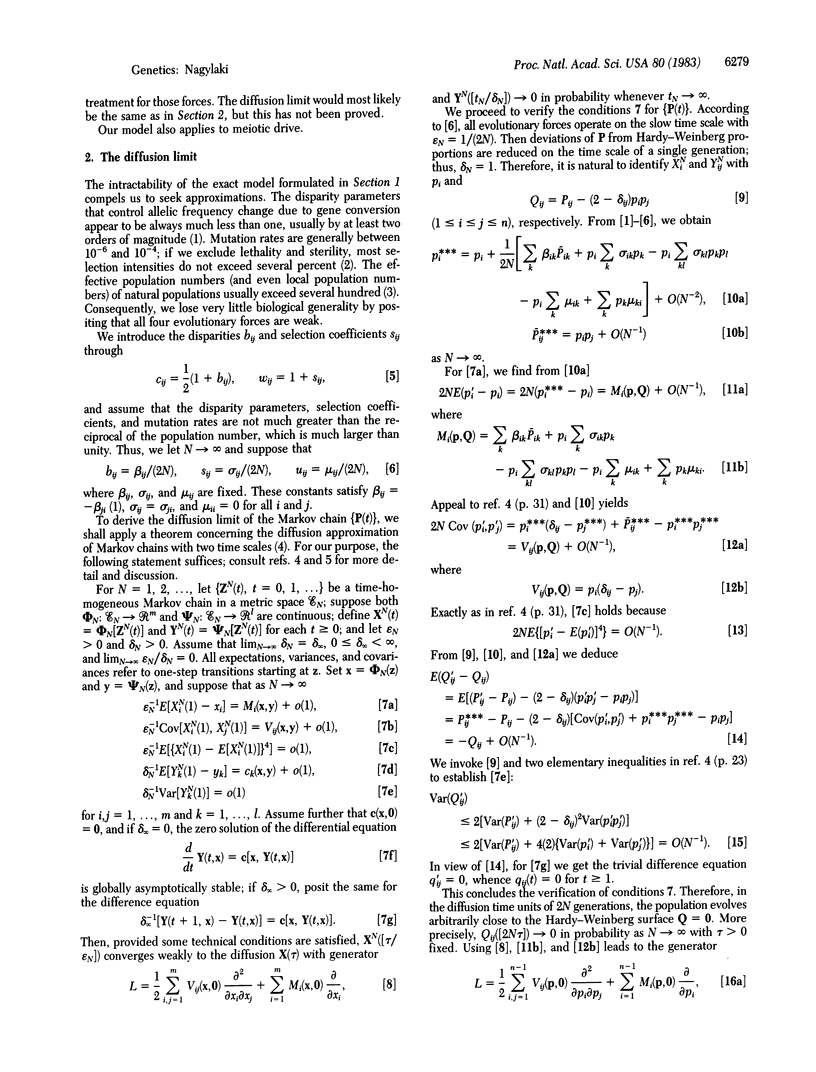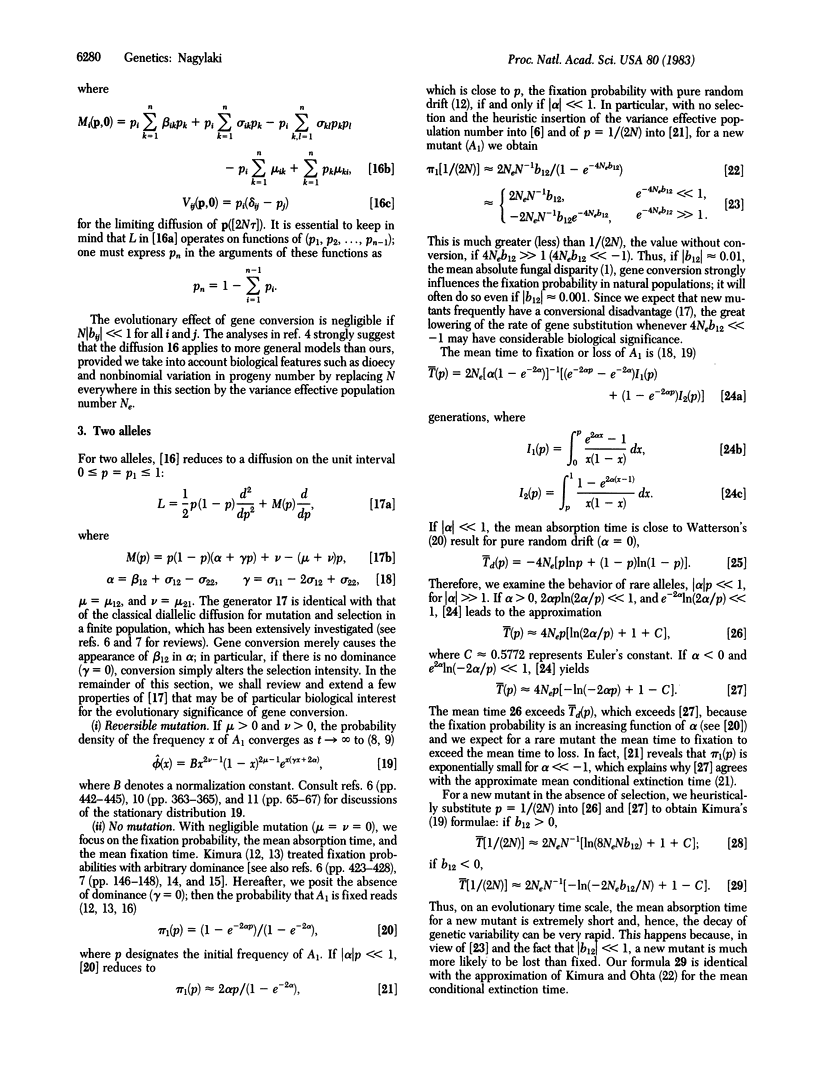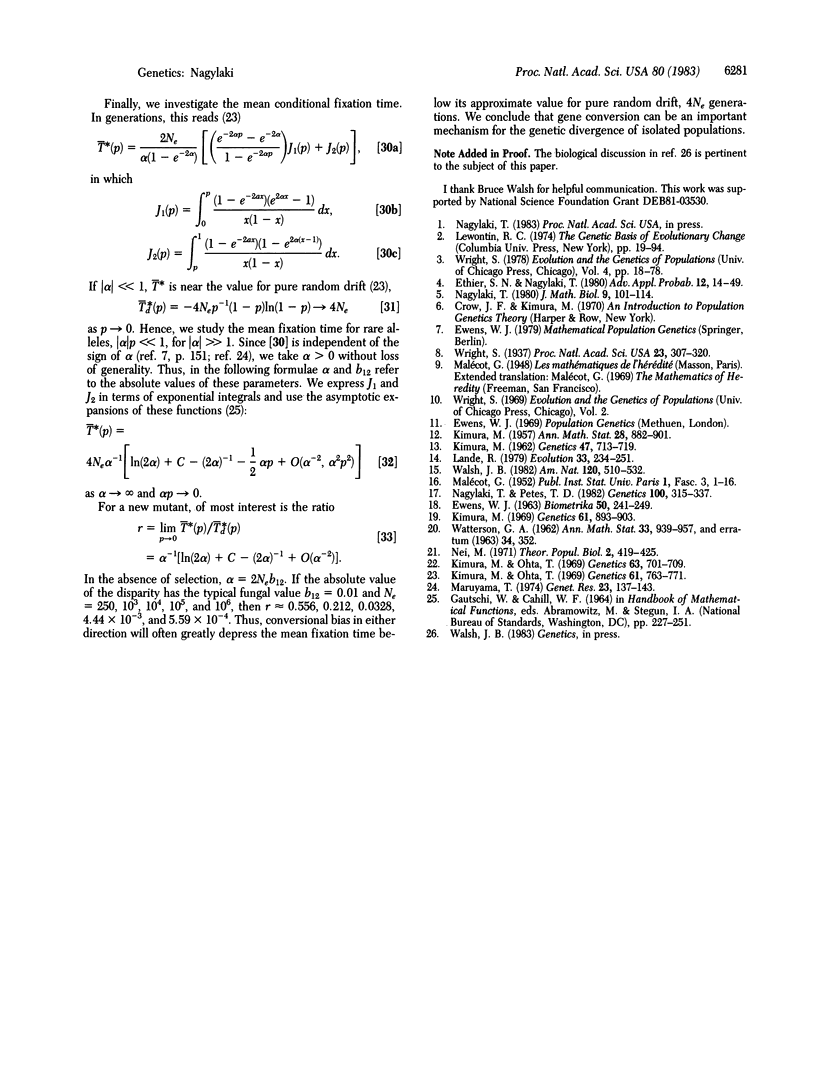Abstract
Evolution at a multiallelic locus under the joint action of gene conversion, mutation, selection, and random genetic drift is studied. Generations are discrete and nonoverlapping; the diploid, monoecious population mates at random. Under the assumption that all four evolutionary forces are weak, a diffusion approximation is established for the dynamics of the gene frequencies. For two alleles, the inclusion of gene conversion merely alters one of the two selection parameters of the thoroughly investigated diffusion process without conversion. Therefore, all results for this classical process, some of which are reviewed and extended here, are immediately applicable to the biologically more general problem. Small conversional disparities can dramatically affect the fixation probability (and hence the rate of gene substitution) and can greatly reduce the mean conditional fixation time of a new mutant. The mean absorption and fixation times are often sufficiently short to imply that biased gene conversion can be an important mechanism for the loss of genetic variability in and the genetic divergence of isolated populations.
Full text
PDF



Selected References
These references are in PubMed. This may not be the complete list of references from this article.
- KIMURA M. On the probability of fixation of mutant genes in a population. Genetics. 1962 Jun;47:713–719. doi: 10.1093/genetics/47.6.713. [DOI] [PMC free article] [PubMed] [Google Scholar]
- Kimura M., Ohta T. The Average Number of Generations until Fixation of a Mutant Gene in a Finite Population. Genetics. 1969 Mar;61(3):763–771. doi: 10.1093/genetics/61.3.763. [DOI] [PMC free article] [PubMed] [Google Scholar]
- Kimura M., Ota T. The average number of generations until extinction of an individual mutant gene in a finite population. Genetics. 1969 Nov;63(3):701–709. doi: 10.1093/genetics/63.3.701. [DOI] [PMC free article] [PubMed] [Google Scholar]
- Kimura M. The number of heterozygous nucleotide sites maintained in a finite population due to steady flux of mutations. Genetics. 1969 Apr;61(4):893–903. doi: 10.1093/genetics/61.4.893. [DOI] [PMC free article] [PubMed] [Google Scholar]
- Maruyama T. The age of an allele in a finite population. Genet Res. 1974 Apr;23(2):137–143. doi: 10.1017/s0016672300014750. [DOI] [PubMed] [Google Scholar]
- Nagylaki T., Petes T. D. Intrachromosomal gene conversion and the maintenance of sequence homogeneity among repeated genes. Genetics. 1982 Feb;100(2):315–337. doi: 10.1093/genetics/100.2.315. [DOI] [PMC free article] [PubMed] [Google Scholar]
- Nagylaki T. The strong-migration limit in geographically structured populations. J Math Biol. 1980 Apr;9(2):101–114. doi: 10.1007/BF00275916. [DOI] [PubMed] [Google Scholar]
- Nei M. Extinction time of deleterious mutant genes in large populations. Theor Popul Biol. 1971 Dec;2(4):419–425. doi: 10.1016/0040-5809(71)90030-x. [DOI] [PubMed] [Google Scholar]
- Wright S. The Distribution of Gene Frequencies in Populations. Proc Natl Acad Sci U S A. 1937 Jun;23(6):307–320. doi: 10.1073/pnas.23.6.307. [DOI] [PMC free article] [PubMed] [Google Scholar]


